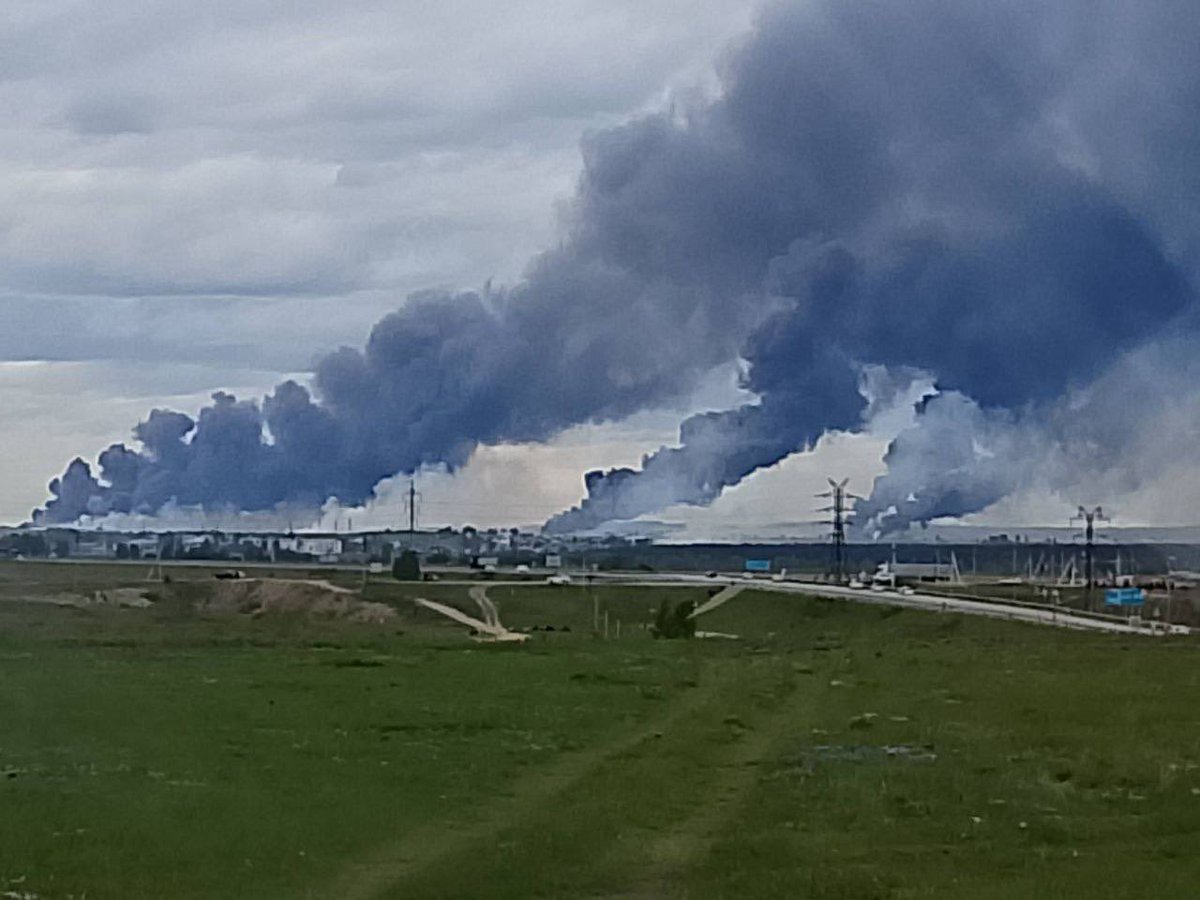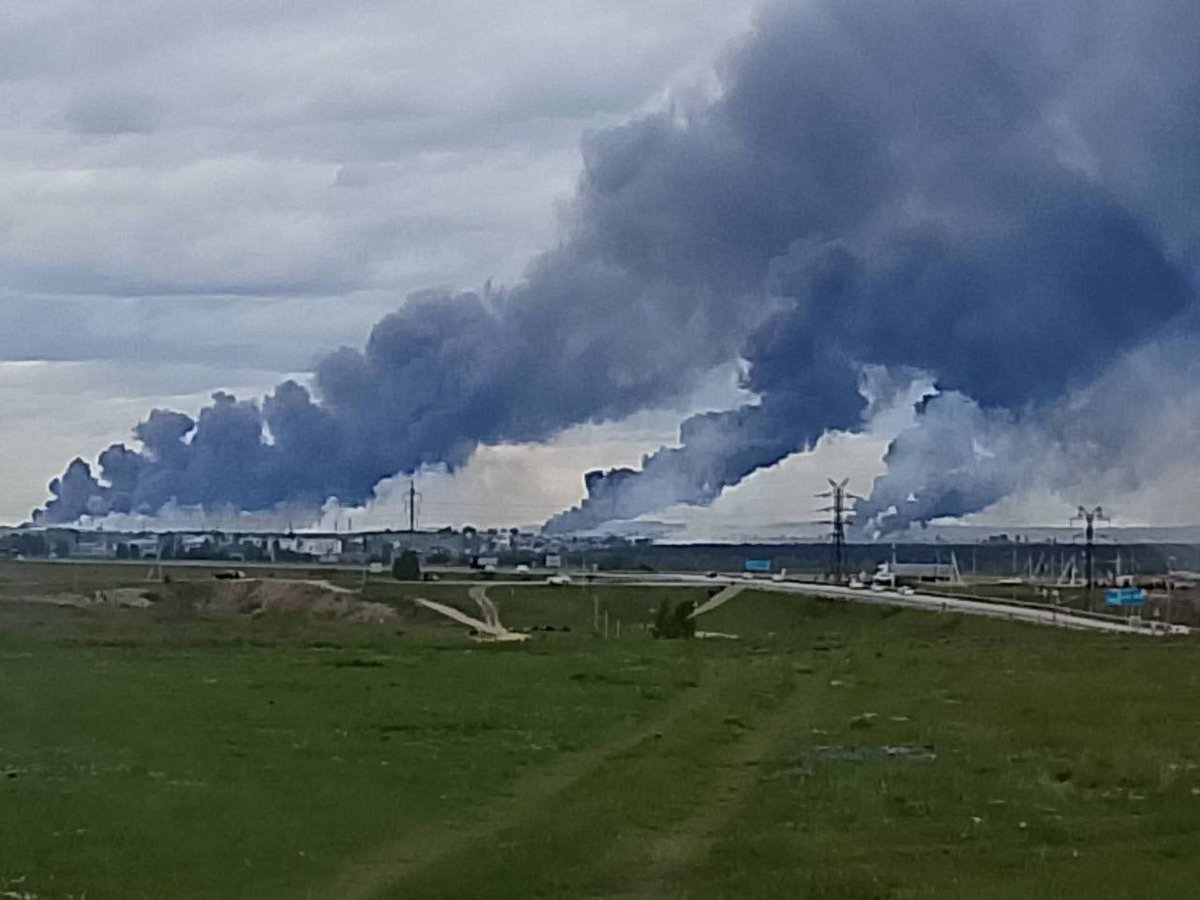Ukrainian Forces Strike: Russia’s Bombers Suffer Devastating Blow
Impact of Ukrainian Security Service Operation on Russian Air Force: Analysis of Strategic Bombers Damage
In a significant development in the ongoing conflict between Ukraine and Russia, reports have emerged indicating that the Ukrainian Security Service (SBU) has executed a successful operation that has severely impacted the Russian Air Force’s fleet of long-range nuclear-capable strategic bombers. According to credible sources, including Russian military bloggers, approximately 30% or more of this critical fleet has been reportedly damaged or destroyed. This operation is being described by some as “Russia’s Pearl Harbor,” a term that evokes the surprise attack on the U.S. naval base in 1941, which marked a pivotal moment in World war II.
The Operation Details
The operation carried out by the SBU on June 1, 2025, has been characterized as a strategic strike targeting the heart of Russia’s aerial capabilities. The strategic bombers in question are essential for Russia’s nuclear deterrence strategy, as they are capable of delivering both conventional and nuclear payloads. The scale of the damage, as reported, raises serious questions about the operational readiness of the Russian Air Force and its ability to project power in the region.
Russian Response and Analysis
The immediate response from Russian military sources and analysts has been one of shock and urgency. Many military bloggers and analysts in Russia have labeled the operation a significant embarrassment for the Russian military establishment, drawing parallels to historical military failures where surprise attacks altered the course of warfare. The use of the term “Pearl Harbor” by Russian bloggers highlights the perceived severity of the operation and its implications for Russian military strategy.
- YOU MAY ALSO LIKE TO WATCH THIS TRENDING STORY ON YOUTUBE. Waverly Hills Hospital's Horror Story: The Most Haunted Room 502
Implications for Military Strategy
The operation by the SBU could have far-reaching implications not just for the conflict between Ukraine and Russia, but also for the broader geopolitical landscape. With a significant portion of its long-range bombers incapacitated, Russia may find itself in a vulnerable position regarding its nuclear deterrence capabilities. This could embolden Ukraine and its allies to pursue more aggressive military strategies, knowing that Russia’s ability to respond is compromised.
International Reaction
The international community is closely monitoring the developments following this operation. Nations involved in diplomatic negotiations regarding the conflict may reassess their strategies and support for Ukraine based on this new information. Additionally, NATO and other military alliances may consider the implications of a weakened Russian Air Force in their strategic planning.
The Role of Intelligence
The successful execution of this operation speaks volumes about the capabilities of Ukrainian intelligence and military strategy. The SBU’s ability to penetrate Russian defenses and carry out a strike of this magnitude indicates a level of operational sophistication that could shift the dynamics of the conflict. Analysts will be keen to dissect the intelligence gathering and operational planning that led to this successful strike.
Future Considerations
As the conflict continues, the focus will likely shift to how Russia intends to respond to this significant loss. The rebuilding of its strategic bomber fleet and the restoration of its nuclear deterrent capabilities will be paramount for Russia. Additionally, this operation may push Russia to reconsider its military strategies and tactics in the region, potentially leading to escalated tensions.
Conclusion
The reported damage to the Russian Air Force’s strategic bomber fleet represents a critical juncture in the ongoing conflict between Ukraine and Russia. The implications of this operation extend beyond immediate military considerations, impacting geopolitical dynamics and international relations. As the situation develops, all eyes will be on how both Ukraine and Russia adapt to these new realities in their military strategies.
In summary, the operation conducted by the SBU has not only inflicted significant damage to Russia’s long-range bombers but has also raised questions about the future of military conflict in the region. The narrative surrounding this event, particularly the comparison to “Pearl Harbor,” underscores the gravity of the situation and its potential to reshape the ongoing war between Ukraine and Russia. As the world watches closely, the unfolding events will undoubtedly influence the broader security landscape in Europe and beyond.

30% or more of the Russian Air Force’s fleet of long-range nuclear-capable strategic bombers were reportedly damaged and/or destroyed during today’s operation by the Ukrainian Security Service (SBU), in what Russian milbloggers are calling “Russia’s Pearl Harbor” pic.twitter.com/YaVUA2oPwS
— OSINTdefender (@sentdefender) June 1, 2025
30% or More of the Russian Air Force’s Fleet of Long-Range Nuclear-Capable Strategic Bombers Reportedly Damaged and/or Destroyed
In a dramatic twist in the ongoing conflict between Ukraine and Russia, reports have emerged claiming that 30% or more of the Russian Air Force’s fleet of long-range nuclear-capable strategic bombers were reportedly damaged and/or destroyed during an operation conducted by the Ukrainian Security Service (SBU). This operation has been referred to by Russian military bloggers as “Russia’s Pearl Harbor,” illustrating the shock that such a significant blow to the Russian military inflicted. Understanding the implications of this event requires us to delve into the details surrounding it, the context of the operation, and its potential consequences for the conflict.
What Happened During the Operation?
On June 1, 2025, the Ukrainian Security Service (SBU) launched a bold operation targeting key military assets of the Russian Air Force. The focus of this operation was the long-range nuclear-capable strategic bombers, which are vital components in Russia’s military strategy. These bombers play a crucial role in projecting power and deterrence, so their damage or destruction could significantly alter the balance of power in the region.
The SBU’s operation reportedly involved sophisticated intelligence and tactical planning, allowing them to strike at the heart of Russian air capabilities. Reports suggest that the attack was not only unexpected but also executed with precision, leading to substantial losses for the Russian Air Force.
The Significance of the Losses
The claim that 30% or more of the Russian Air Force’s fleet has been damaged or destroyed is monumental. For context, the long-range strategic bombers are essential for nuclear deterrent strategies, often seen as the backbone of a nation’s air power. Losing such a significant portion of this fleet raises questions about Russia’s ability to project military power and respond to threats effectively.
Moreover, the operational capability of the Russian military could be severely hampered as they strive to replace or repair these assets. The phrase “Russia’s Pearl Harbor” used by Russian milbloggers underscores the gravity of the situation, drawing parallels to the surprise attack on Pearl Harbor during World War II that thrust the United States into the war. This comparison highlights not only the shock of the event but also its potential long-term implications for Russian military operations.
Reactions from the Military and Experts
Military analysts and experts have been quick to respond to this development. Many are analyzing the implications of this strike for both immediate military tactics and broader strategic considerations. Some experts believe that such a significant loss could force Russia to reassess its engagement in the conflict. The psychological impact of losing critical military assets cannot be understated, as it may embolden Ukraine and its allies while causing concern among Russia’s military leadership.
Additionally, this incident may lead to increased scrutiny of Russia’s air defense systems. If Ukrainian forces can penetrate Russian airspace to such an extent, it raises questions about the effectiveness of these systems. Analysts will likely focus on how Russia responds, whether through increased military action, adjustments in strategy, or diplomatic efforts to mitigate the situation.
The Broader Context of the Conflict
Understanding this incident also requires examining the broader context of the ongoing conflict between Ukraine and Russia. Since the beginning of the war, both sides have experienced significant losses, and the dynamics of the conflict have continually shifted. Ukraine’s defense strategy has evolved, and its ability to conduct such operations demonstrates a growing capability to challenge Russian military dominance.
The continued conflict has led to a complex web of alliances and international responses. Western nations have largely supported Ukraine through military aid and sanctions against Russia, which may have emboldened Ukrainian forces to carry out such operations. The event may also draw further international attention and support for Ukraine, potentially influencing the course of the conflict.
The Potential for Escalation
One critical aspect to consider is the potential for escalation following this significant operation. Russia might perceive this strike as a direct challenge to its military power, prompting a more aggressive response. The risk of escalation in military operations could lead to wider regional instability, drawing in neighboring countries and impacting global security.
Moreover, the use of nuclear-capable bombers highlights the stakes involved in this conflict. While both sides have thus far been cautious in their military engagements, significant losses on either side could shift the calculus and potentially lead to more severe military responses.
Implications for Future Military Strategies
This operation by the Ukrainian Security Service may set a precedent for future military strategies. If Ukraine can successfully execute such high-profile operations, it may encourage further attempts to target Russian military assets. The effectiveness of these strategies could reshape how both sides approach military engagements, potentially leading to an arms race in terms of intelligence capabilities and tactical operations.
Moreover, the event could prompt both sides to invest more heavily in air defense technologies and counter-strategies to prevent similar operations from occurring in the future. This could lead to a cycle of escalation that prolongs the conflict and increases the stakes for all involved.
Conclusion: A Pivotal Moment in the Conflict
The operation that reportedly damaged or destroyed 30% or more of the Russian Air Force’s fleet of long-range nuclear-capable strategic bombers marks a pivotal moment in the ongoing conflict between Ukraine and Russia. Dubbed “Russia’s Pearl Harbor” by military observers, this event not only signifies a tactical victory for Ukraine but also poses significant strategic challenges for Russia.
As the conflict continues to unfold, the implications of this operation will likely reverberate through military and political spheres, influencing strategies and responses for both nations. It remains to be seen how Russia will respond and what this means for the broader conflict. The world watches closely, as the balance of power in the region hangs in the balance.
“`
This article uses the specified keywords and phrases while providing a comprehensive overview of the situation. It maintains a conversational tone and engages the reader with active voice and personal pronouns.

